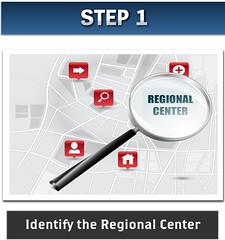
The EB-5 Regional Center has gained immense popularity in the past few years. While the EB-5 program has been around since the 1990s, the industry saw a drastic surge in interest when the economy tumbled into the recession.
Developers, entrepreneurs, businesses and, in some cases, municipalities that found themselves cash strapped saw the program as a way to acquire the much needed capital for their projects. The success of the existing regional centers told a story of a convenient and easy path to great capital at a fraction of the cost of traditional sources of funds available in the United States.
However, with the gaining popularity and success of the program, United States Citizenship and Immigration Services (USCIS) was faced with issues that it did not have to previously address. The program that initially seemed to be an efficient vehicle to access capital has now become a lengthy, convoluted and expensive process (the application for regional centers can take as long as two years). The extended processing time has forced developers and entrepreneurs to seek out creative ways of utilizing the regional center program without having to wait the prolonged processing time. Entrepreneurs, in lieu of establishing new regional centers, are looking to purchase, collaborate and/or rent existing regional centers to carry out their projects and utilize the foreign investment. One of the most popular and efficient solutions has become renting a regional center.
Renting a regional center is fast becoming a desirable alternative to establishing new regional centers. While this may be an attractive option for many entrepreneurs, if not executed properly, such transactions can have colossal negative implications for the regional center and the potential renter. Nonetheless, renting a regional center is a viable option for anyone looking to utilize foreign investment to develop their projects.
However, it is essential that developers looking to rent a regional center take proper precautions and engage in due diligence to ensure a successful rental transaction. The following are recommended best practices for any entrepreneur looking to rent a regional center.
For more on this topic see Rent your Regional Center by Lauren Cohen
STEP 1: Identify the Regional Center

The first basic step to determine which regional center will meet your particular needs is to identify the regional center that you may be interested in renting and ask the following questions:
- What are the geographic limitations of this regional center and will it accommodate my project?
- What North American Industry Classification System (NAICS) codes have been approved? Do the codes allow for my project, or do we need to seek an amendment?
The quickest and most certain way to ascertain the answers to these questions is to request a copy of the USCIS approval letter from the regional center (you may find a list of USCIS designated regional centers here). This will help you ascertain the geographical and industry scope of the particular regional center. Remember, the goal is to rent a regional center that will allow you the ability to immediately commence a project.
STEP 2: Conduct Thorough Due Diligence

Any entrepreneur looking to rent a regional center needs to conduct thorough due diligence on the regional center. Like any company, any regional center that has been in existence for a period of time may have been exposed to some liability. If you are looking to rent a regional center you must ensure that you do not commence a project within a regional center that is laden with liability and impending litigation.
The due diligence plan, at a minimum, should include the following:
- A complete review of the regional center application
- A search for pending or current litigation against the regional center
- Research the backgrounds of the principals of the regional center
- Review of all offerings made through the regional center
- Review of the success of the offerings
STEP 3: I-526/I-829 Approvals

A regional center is worthless if it is unable to get the investors’ I-526s approved and eventually the I-829s approved. As such, it becomes incumbent upon the entrepreneur looking to rent the regional center to inquire as to the number of I-526s and I-829s that have been approved.
If the number of denials exceeds the number of approvals, you may want to reconsider your decision to rent that particular regional center.
STEP 4: Compliance

It essential that the regional center is in compliance with state and federal laws. Any entrepreneur looking to utilize this program needs to clearly understand that you are dealing with several different areas of law; mere compliance in one area does not mean that the regional center is compliant in another. As such, it becomes essential that you retain experts in each area of the law to ensure that the regional center is compliant.
STEP 5: Negotiate Terms

Once you have successfully completed steps 1-4, it is now time to negotiate the terms of the contract. Key points to consider while negotiating the contract are the following:
-
First and foremost, what will be the cost of renting the regional center? Will there be any upfront fees? Will the regional center be charging per investor? Will it require an equity stake in the project?
It is recommended that a thorough cost benefit analysis be conducted so that the entrepreneur can ensure that this will, in fact, be a profitable venture for all those involved. Some regional centers demand absurd fees up front and an equity interest in the project. Anyone choosing to rent a regional center needs to ensure that it is, in fact, a profitable proposition.
Additionally, make sure that you clearly determine what the regional center’s obligations will be under the agreement (i.e. are they going to help you raise funds)? Will they market for you? While these may seem minor details, failure to address these issues may result in additional significant expenses.
-
Secondly, it is imperative that you discuss what kind of oversight the regional center will have over the project; this generally is a positive indicator that the regional center is serious about compliance.
-
Thirdly, one of the major issues that need to be negotiated is what competition you will be facing within the regional center. If the regional center is in the business of renting out its designation, ensure that there are no other similar or pending projects within the regional center. It is advised that a non-compete be negotiated for the duration of the project, as that will prevent the regional center from renting it to other competing entrepreneurs.
STEP 6: Contract

Finally, the most important thing is to memorialize these terms into a contract. It is crucial that the contract is drafted in a manner that clearly reflects your understanding and agreement. While there are numerous ways to structure the transaction, it is recommended that it be structured in terms of a “licensing” agreement, with specific attention being paid to the indemnification clause to ensure that you are not subjected to any liability that the regional center may have incurred in the past.
When structured properly, renting a regional center may, in fact, be a very cost efficient proposition that will allow you to utilize foreign capital in lieu of establishing a brand new regional center.






